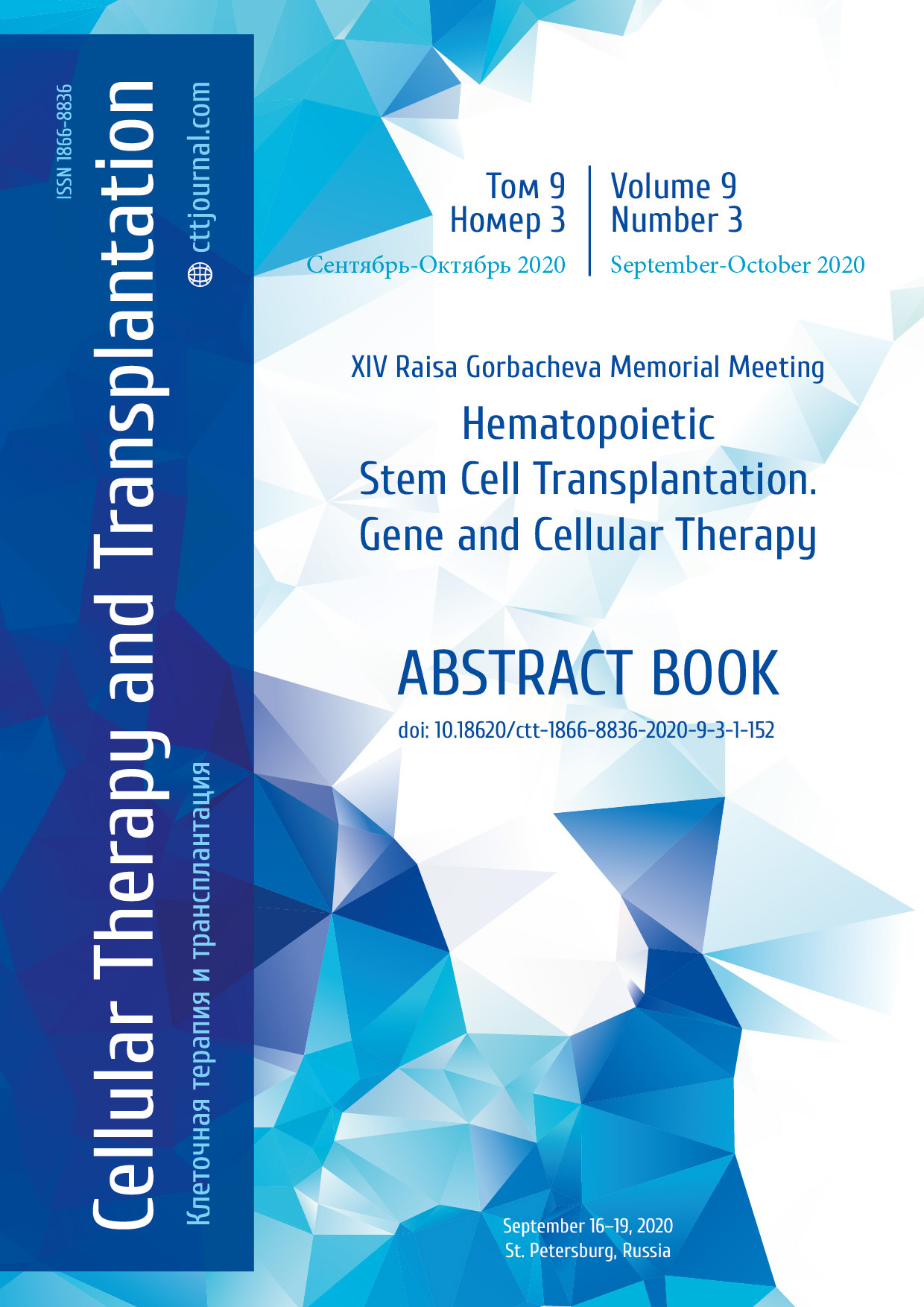IC-02. Influence of various prophylaxis regimens on the structure of acute graft-versus-host disease in patients after allogeneic hematopoietic stem cell transplantation
Darya S. Dubnyak, Mikhail Yu. Drokov, Natalya V. Risinskaya, Vera A. Vasilyeva, Anna A. Dmitrova, Zoya V. Konova, Natalia N. Popova, Olga S. Starikova, Ulyana V. Maslikova, Ekaterina D. Mikhaltsova, Mobil I. Akhmedov, Mariya V. Dovydenko, Natalia M. Nikiforova, Olga M. Koroleva, Feruza A. Omarova, Elmira I. Kolgaeva, Julia O. Davydova, Nikolay М. Kapranov, Larisa A. Kuzmina, Irina V. Galtseva, Andrey B. Sudarikov, Elena N. Parovichnikova, Valery G. Savchenko
National Research Center for Hematology, Moscow, Russia
Contact: Dr. Mikhail Yu. Drokov, e-mail: mdrokov@gmail.com
Summary
Introduction
Acute graft-versus-host disease (aGVHD) is a severe complication of allogeneic hematopoietic stem cell transplantation (allo-HSCT). A lack of response to initial steroid therapy significantly impairs long-term outcomes after allo-HSCT. In many cases, aGVHD develops after immunosuppressive therapy (IST) tapering/withdrawal, or after donor lymphocyte infusion (DLI). According to the National Research Center for Hematology, more than half of patients with aGVHD induced by DLI have grade 3-4 aGVHD. Our aim was to assess the effect of different GVHD prophylaxis regimens on post-transplant chimerism and aGVHD structure.
Patients and methods
Clinical analysis included 279 patients after allo-HSCT performed from 2016 to 2020. The patients’ characteristics are shown in Table 1. Chi-square test was used to analyze the contingency tables. A p-value less than 0.05 was considered as significant. The entire data analysis was conducted by means of SPSS ver. 23 software (IBM, Chicago, Ill., USA).
Table 1. Clinical characteristics of the patients

Results
The results of our study are shown in Figure 1. Usage of horse antithymocyte globulin (h-ATG) alone affected GVHD structure in the patients after allo-HSCT from matched related donors (n=97). aGVHD developed in 31 patients from this group: in de novo cases (n=13), 13.4%, whereas aGVHD resulting from the IST tapering due to mixed chimerism (n=10) was observed in 10.3%; after donor lymphocyte infusions (n=8), in 8.2%. The situation is similar in a group of patients with HLA-matched unrelated allogeneic hematopoietic cells (n=83). Symptoms of aGVHD were developed in 37 patients: de novo (n=19), 22.9%; aGVHD as a result of reduction of IST due to mixed chimerism (n= 15), 18.1%, and aGVHD after donor lymphocyte infusion (n=3) was revealed in 3.6%. The pattern of GVHD was modified in the patients with post-transplant cyclophosphamide (PTCy) prophylaxis, or TCR CD19-depletion. HSCT from mismatched unrelated donor was performed in 43 patients. aGVHD developed in 14 patients: de novo (n=11), in 25.6%; aGVHD after IST tapering due to mixed chimerism (n= 1), in 2.3%; aGVHD after donor lymphocyte infusion was observed in 2 cases (4.7%). HSCT from HLA-haploidentical donor was carried out in 56 patients. In this group, aGVHD was confirmed in 14 patients: de novo (n=12), 21.4%; aGVHD as a result of IST tapering due to mixed chimerism occurred in 1 case (1.8%); aGVHD after donor lymphocyte infusion developed in 1 case (1.8%). The development of aGVHD due to immunosuppressive therapy taper was linked to regimens with horse ATG (p <0.05).

Figure 1. Influence GVHD prophylaxis regimens on the development and structure of acute graft-versus-host disease
Conclusion
Various GVHD prophylaxis regimens affect the frequency and pattern of aGVHD. In case of hATG usage the frequency of aGVHD associated with immunosuppressive therapy taper due to mixed chimerism achieves 40.2 %. Meanwhile this type of GVHD accounts for only 10.6% when using more aggressive regimens like post-transplant high dose cyclophosphamide (PTCy). Thus, it is necessary to use drugs with adequate immunoablation for immunosuppressive therapy regimens, that will contribute further to the achievement of stable chimerism with subsequent avoidance of an early withdrawal of immunosuppressive therapy and associated aGVHD in the future.
Keywords
Acute graft-versus-host disease, post-transplant chimerism, allogeneic stem cell transplantation.


